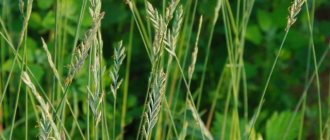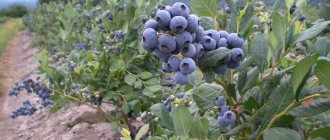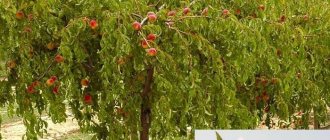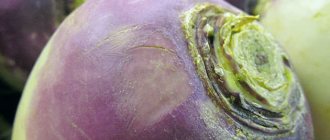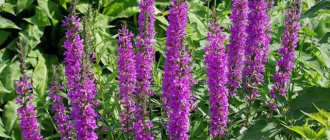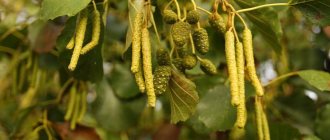- June 24, 2019
- Vegetables
- Nastasya Krakhina
Artichoke is an amazing vegetable. It is valued for its dietary properties, taste and originality. However, to this day it remains a mystery to many what kind of plant this artichoke is. This article will help you understand this issue, and will also tell you about the beneficial properties of the vegetable and how to grow it in your garden. In addition, photos of the artichoke plant at different stages of ripening will be presented.
Description
Artichoke is a plant that is a member of the Asteraceae family. Historical data says that it was grown even in Ancient Egypt, Rome and Greece. Now the artichoke is a common plant that can be found on all continents (except Antarctica).
Artichoke fruits are a real delicacy, valued for their unforgettable taste and dietary qualities. However, it is surprising that this crop is so widespread in Australia and South America that it is considered a common weed there.
It is most often consumed as a vegetable in Italy, Spain and the USA. These countries are considered the largest producers (suppliers) of artichokes.
This crop was brought to Russia during the reign of Peter I. However, in those days, artichokes were not used in cooking, but the plant was used solely for the purpose of aesthetic pleasure. Large, beautiful artichoke flowers delighted the eye and caused genuine surprise among people. However, there is evidence that Peter I did eat the fruits of the plant as recommended by doctors. He was assured that this vegetable would help him cope with diseases of the urinary system.
The unblown inflorescences of the plant, which have dense scales, are considered suitable for food. Vegetable fruits are collected at different stages of ripening. Young inflorescences are eaten fresh, and medium-sized fruits are well suited for canning, pickling, baking, etc.
Application in cosmetology
Artichoke is a plant that has a rejuvenating effect on the human body, therefore it is actively used in mesotherapy as a non-surgical means for correcting the face and figure. Its value lies in its rich composition, which includes: inulin, salts, vitamins, cynarin, organic acids, flavonoids that nourish a woman’s dermis. Based on the extract from the inflorescence, the following are produced: toothpaste, rubs, balms, ointments, lotions, masks.
In pursuit of beauty, women agree to subcutaneous administration of drugs containing artichokes for local effects on the problematic part of the body (using microneedles).
This procedure (mesotherapy) allows you to achieve the following results:
- reduction of cellulite (the combination of artichoke and hyaluroidase or alaxatin has powerful lymphatic drainage and lipolytic effects that activate fat burning in the thighs, abdomen, buttocks);
- skin moisturizing;
- reducing inflammation of the dermis and, as a result, suppressing the progression of acne;
- preventing baldness, eliminating dandruff, stimulating hair growth;
- improving facial tone, smoothing wrinkles;
- removing swelling from tissues (in the area around the eyes).
Useful properties of artichoke
When a study was conducted in the United States to analyze the antioxidant content of more than 100 foods, it was found that artichokes took third place on the list, thereby taking one of the leading positions. It is worth noting that antioxidants are substances that can cope with cell damage. They are known to fight oxidative stress, which is a form of cellular damage caused by free radicals that are produced in the human body throughout life.
Artichokes contain a lot of fiber. It is known that natural dietary fiber can slow down the rate of absorption of sugar from food (including natural sugars). Fiber also ensures the normal functioning of the digestive system, cleansing it of toxins.
Artichokes are one of the leading vegetables that contain some form of prebiotics (substances that are responsible for supporting beneficial microorganisms living in the intestines). In turn, these beneficial bacteria have a positive effect on the immune system. Therefore, we can conclude that the artichoke vegetable also has general strengthening properties.
Artichokes contain up to 4 grams of protein per 100 g of product. Protein is made up of amino acids and is found in every cell of the human body. Pregnant women, children and teenagers need protein for growth, and adults need it to maintain healthy cells and build muscle mass. In addition, according to nutritionists, this vegetable is recommended for athletes and vegetarians, since it is for these people that it is very important to saturate the body with a large amount of protein.
According to a review of experimental and clinical trials published in the journal Plant Foods in 2015, the fruits of this plant were found to have healing effects on the liver. This is due to the high concentration of cynarin, which is found in the leaves. Research has shown that this compound cleanses the liver and can help liver cells repair themselves naturally.
Doctors put forward a theory that states that artichokes can be used as a natural detoxification product for the liver, gallbladder and digestive system.
A study published in 2009 found that concentrated artichoke leaf juice significantly lowered blood pressure. Apart from this, there are a number of scientific studies that show that artichoke plant extract can effectively reduce high levels of bad cholesterol.
Based on the data presented, we can conclude that the beneficial properties of artichoke can provide good support to the entire body. However, it is important to remember that any product is only good when consumed in moderation. By consuming this vegetable often and in large quantities, you can trigger various unfavorable processes in the body.
Plant as medicine
Due to its rich chemical composition, the artichoke is popular in both folk and traditional medicine. It is the basis for many medicines. Often medicinal preparations are made from artichokes to restore the liver or lose weight.
Extract
Artichoke extract is a valuable product intended for the treatment of the liver and biliary organs. The product contains microelements that are necessary for the full functioning of the body. Pure extract is a green powder. The plant is dried and thoroughly crushed. The resulting powder is packaged in 0.5-1 gram quantities. Such portions are intended to be dissolved in warm water. They should be taken morning and evening with meals for 10-12 days.
Hood
Artichoke extract is a thick black liquid. It is obtained after prolonged exposure of the plant to high temperatures. The extract is designed to be dissolved in water. Simply follow the following algorithm:
- Dissolve the extract in water in a proportion of ¼.
- Mix the solution thoroughly.
- Take the resulting product 3 times a day half an hour before meals.
The finished medicine should be stored in the refrigerator for no more than a day. The duration of treatment is 10 days. The body receives useful elements.
Pills
Very often, artichoke can be found in tablets. These dietary supplements accelerate the production of bile and have diuretic effects, which is why they are used to treat liver diseases. Typically, 1 tablet contains 590 mg of active ingredient. It is recommended to take them with meals:
- Adults – 2 tablets 2 times a day;
- Children – 1 tablet 3 times a day.
The duration of such therapy should be a month. Many doctors recommend taking the drug "Hofitol", which is based on artichoke. The product is perfectly absorbed by the body and has a powerful restorative effect on the liver.
Capsules
There are a sufficient number of artichoke capsules on the pharmacological market. The most popular is Artichoke Extract. They improve intestinal function and restore the body after poisoning. It is recommended to take 1 capsule three times a day with meals. When the first signs of an allergic reaction appear, use should be discontinued.
Varieties
In total there are about 140 varieties of this plant. However, only 40 of them are suitable for human consumption, while the rest are considered inedible. Spanish and true artichokes are the two types most commonly grown for culinary purposes.
Seeds of the following varieties are always available in gardening stores in the CIS countries:
- "Sultan".
- "Laonsky".
- "Purple Early".
- "Handsome."
- "May 41".
- "Maikop Tall".
- "Large green."
These are mainly imported varieties. However, they are well suited to any climate.
Artichoke in cooking
Chefs and housewives have learned to use artichokes in cooking and prepare many dishes from it. It is boiled, fried, stewed, stuffed. The vegetable is used to make desserts, prepare fillings for pies, and bake baked goods. Canned food, sauces, and purees are produced from the plant. The meaty basket is cut into salads or side dishes are prepared from it. The natural product adds an unusual taste to any dish. And blooming artichoke flowers decorate culinary masterpieces.
Young inflorescences are considered more tender. To prepare especially large fruits, you must first remove the middle.
Growing artichoke from seeds
Growing this plant yourself is absolutely easy. However, it should be borne in mind that in central Russia it is necessary to plant seedlings, not plant seeds, in open ground. Artichoke from seeds is germinated in advance (about 60-65 days before planting it in the garden) at a temperature of about 25 degrees.
The best soil for germinating seeds is one that will consist of turf soil, river sand and humus. The seeds are initially soaked for 10 hours, after which they are planted in a container. At first, the container should be in the room. After the first sprouts appear, the container with seedlings should be moved to the refrigerator for 20-25 days.
After this time, the seedlings should be removed back to the room (where the temperature should be about 25 degrees) and allowed to grow a little. Now it is necessary to take into account an important point - if there is still enough time before planting in open ground, and real leaves have appeared on the seedlings, you need to remove the seedlings to a place where the temperature will be about 12 degrees. Such a change in conditions will not allow her to stretch out. It is worth paying attention to the photo of the artichoke plant presented below. This is what proper seedlings should look like.
As soon as the seedlings are 60 days old and each seedling has 4 leaves, it is time to plant the plant in open ground. By following these recommendations, you will have the opportunity to “harden” the seedlings and make sure that the plant subsequently produces not only fruits, but also high-quality seeds, which in the future can be planted with full confidence that they will germinate and bear fruit.
What does the plant look like?
Many of us have no idea what an artichoke plant looks like. But we saw thistles more than once. These plants are very similar in appearance, especially during the flowering period.
The part of the artichoke that can be consumed is not the fruit, but the unopened receptacle (bud). This perennial plant has large leaves and a straight stem. The places where the artichoke grows are open to sunlight. The humidity there should be low. In such conditions, the plant develops well and reaches a height of about a meter.
Plant care
After the seedlings have been transferred to the ground, it is necessary to monitor the soil moisture. Especially at first, while the rooting process is taking place. The soil should always be moderately moist.
Experienced gardeners recommend watering the plant with mineral fertilizers two weeks after planting. As a supplement, manure can also be used for fertilizer.
It is important to loosen the soil and pull out weeds in your artichoke bed as often as possible. This will allow the root system to receive as many nutrients as possible from the ground.
It should be remembered that if you want to get large and good fruits, you must leave no more than three peduncles on the plant. Otherwise, the harvest will be of lower quality.
Harm and contraindications
Artichoke is not suitable for everyone. It is contraindicated in case of increased stomach acidity, hypotension, and gallstones. It slows down the excretory system, so it is prohibited in case of chronic renal failure, as well as allergies to the product itself. It should also not be used by pregnant, lactating women and children. Sometimes the body does not tolerate artichoke inflorescences well. In this case, the following side effects may occur:
- indigestion;
- acute abdominal pain;
- bloating;
- heartburn;
- nausea and vomiting.
Keep in mind that eating artichokes rarely causes side effects. Most often, this is preceded by an overdose of the extract of this plant. Watch the amount of artichoke - and no side effects will catch you.
It is not recommended to eat artichokes raw. The stomach may not be able to handle coarse dietary fiber. Also, you should not cook an already opened brown rosette - it contains harmful essential oils. You can store a fresh plant in the refrigerator for no more than a week - after this period it begins to accumulate an unpleasant odor and harmful substances.
Artichoke and tomato salad
You should rinse the artichoke fruit well under running water, then remove all hard leaves (as a rule, this is the lowest layer of scales). Next, you need to cut off the leaves one by one and cut them into thin strips.
The tomatoes should be washed, cut into small slices, combined in one container with the prepared artichokes, and seasoned with olive oil and salt. If you wish, you can add a touch of piquancy to the salad with two cloves of crushed garlic. The salad needs to be left in the refrigerator for about 1 hour, then it can be served.
What vitamins does artichoke contain?
Water is the main substance in the artichoke. Its content in artichoke reaches 85%. The plant, in addition to its high protein and fiber content, is rich in vitamins of various groups:
- Group B - thiamine - riboflavin, niacin, etc.
- Vitamin C - ascorbic acid
- Vitamin E - tocopherol
- Vitamin K
What vitamins are contained in artichokes? The benefits of artichokes
Omelette with artichokes
First you need to wash the artichoke under running water and remove all the hard leaves. Next, you should cut several leaves (about 3-5 leaves will be needed for one serving of omelette) and simmer them in a frying pan with the addition of 1 teaspoon of vegetable oil for about 5 minutes.
Beat the eggs, add salt and add to the artichokes. This omelet does not take long to prepare, but you need to fry it on both sides until a beautiful golden crust appears. If desired, the finished dish can be sprinkled with herbs.
History of the origin of the artichoke
Images of artichokes can be seen on the columns of the Egyptian temple in Luxor. The flower was widely used in Ancient Rome, Greece, Egypt and was used as a strong aphrodisiac.
The history of the origin of the artichoke began in ancient times in the Mediterranean. The vegetable can still be seen today in the wild nature of these parts. Then the plant appeared in Northern Europe and Russia, where the unique plant was delivered from Holland under Emperor Peter I, and later the artichoke gained popularity in South America, Australia, and Africa.
The word “ar-dshauk” translated from Arabic sounds like “earth thorn”. The second version of the name of the unusual flower, cynara, is of Greek origin. According to legend, the main of the Olympic Gods, Zeus, was involved in the emergence of the artichoke.
One day, the lord of thunder and lightning was visiting his brother Poseidon and met the girl Cynar. The king of the whole world fell in love with the beauty so much that he offered her immortality and life in heaven. Cynar accepted the offer and began to visit Zeus on Olympus in the absence of his wife Hera.
One day, the girl decided to visit Earth without permission, thereby incurring the wrath of God. The angry ruler turned his beloved into a plant resembling a thorny weed.
Currently, almost all American markets sell artichokes delivered from the small California town of Castroville. This city is secretly considered the capital of rare vegetables. Every year, competitions are held here to choose the Artichoke Queen. In 1949, this title was awarded to Marilyn Monroe. The famous person was a fan of the culinary delights of this culture.
In the 19th century, Pyshkin, Grachev, and Sterio began growing artichokes. Famous Soviet gardeners cultivated the vegetable to supply it to the kitchens of aristocrats.
Artichoke. The nutritional value
Artichoke is a low-calorie product and is therefore well suited for people watching their weight. The inflorescences have the following nutritional value (per 100 grams of product):
| Name | Quantity, gr. | Quantity, % | Daily requirement, % |
| Calories | 28-47 kcal | 2 | |
| Carbohydrates | 6-10,51 | up to 15 | 8 |
| Squirrels | 1,2-3,27 | until 3 | 6 |
| Fats | 0,1-0,2 | 0,1 | 0,5 |
| Water | 90 | ||
| Alimentary fiber | 5,4-7 | 14 |
Diseases and pests
| Black rot Description: young plants affected by a fungal disease dry out. Dark depressed spots appear on an adult artichoke, which spoil the taste of the product. Control measures:
| |
| Powdery mildew Description: A fungal disease affects the leaves, which wither and fall off. A white coating forms on the plant, causing the plant to die. Control measures:
| |
| Black aphid Description: a small insect that feeds on the juice of leaves and inflorescences. Control measures:
| |
| Sunflower moth Description: The caterpillars of this butterfly penetrate the inflorescence and damage it. Control measures:
|

